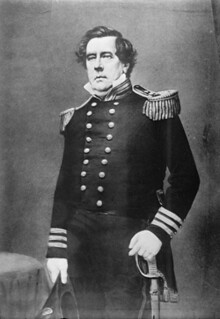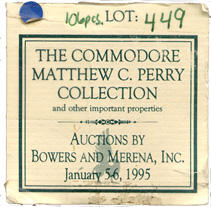
PREV ARTICLE
NEXT ARTICLE
FULL ISSUE
PREV FULL ISSUE
COMMODORE PERRY'S COLLECTIONThanks to Georges Depeyrot for pointing out the Perry Collection at the Fitzwilliam Museum in Cambridge. Here is more information
from the museum's web site. -Editor
A number of Perry's coins can be associated with his famous trip to the Far East in the early 1850s. The Perry Collection therefore provides a tangible link with this important event in Japanese and American history, as well as a valuable insight into the scope and techniques of early American coin collecting. The Fitzwilliam Museum has been lent a substantial element of the Perry Collection by a private collector. An exhibition about Commodore Perry, his trip to Japan and his collection is on display in the Fitzwilliam Museum's Glaisher Gallery, 1 April-5 July 2009. Perry was a man of many interests. Passionate about naval education, he helped establish a naval curriculum and a gunnery school, and worked to implement an apprentice scheme. He was also interested in the modernisation of the navy, and strongly supported the development and construction of steam-powered ships. It was the trip to Japan in 1852-4, however, for which Perry is best remembered. When Perry returned to America from Japan in 1855, he was advanced to the rank of rear-admiral, and retired soon afterwards. He died in New York on March 4th 1858 at the age of sixty-three. He was given an extremely lavish funeral, which included a Grand Pageant through the city. Perry the Collector Coins have been collected throughout history, but the study and collection of coins only took off in America during the mid-nineteenth century. In 1858 the American Numismatic Society was founded to promote and support coin collecting, and was followed by the establishment of the American Numismatic Association with a similar aim in 1891. Perry, collecting during the 1830s-50s, was thus one of the first American collectors to build up such a varied and substantial collection. A few early coin dealers did exist in Perry's day, especially in New York where he lived for a substantial period of his life. Many of his modern coins, however, espeically his American coins, he could have taken straight out of circulation. Others he must have acquired during his long and prestigious naval career. As well as the famous trip to Japan in the 1850s, he travelled to the North Sea during the War of 1812, spent time on the African coast during the founding of Liberia, undertook a series of European voyages, and chased pirate and slave ships around the Caribbean. The wide date and denomination range of his collection suggests that Perry sought out specific coins rather than just collecting currency, showing that he was a careful and determined collector. Commodore Perry's Collection Around a third of Perry's collection, over three hundred coins, were Ancient Greek or Roman, dating from the 5th century BC to the fifth century AD. His collection of Roman coins was especially comprehensive, covering almost the entire Roman period. He obtained a specimen of the coinage of over forty-two different Roman emperors, from Augustus (27 BC - 14 AD) to Theodosius II (408-50 AD). He also obtained over fifty coins from the Byzantine Empire, which dated from the late fifth to the early ninth century. Perry drilled holes through many of his coins, especially his Greek, Roman and Byzantine specimens, and attached identifying hand-written labels to them, many of which still survive as a tangible link to the man himself, his numismatic knowledge and his collecting practice. 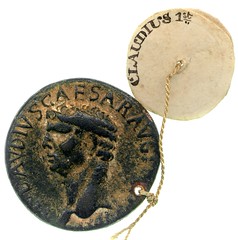 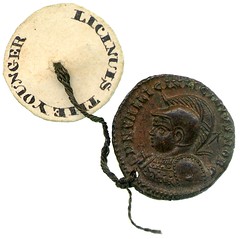 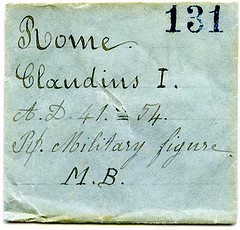 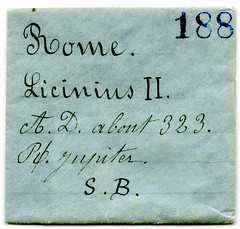 After his death in 1858, Perry's coin collection passed to his daughter, Caroline Perry Belmont. The Belmont family had the Perry Collection valued in 1898 by the New York coin dealer Lyman H. Low. Low identified the coins and put each in a hand-written, numbered and colour-coded envelope, most of which have also survived, providing further evidence of the history of the collection. Perry's coins remained in the Belmont family until they were sold in 1994, and put up for auction in 1995 with the American auction company Bowers and Merena.
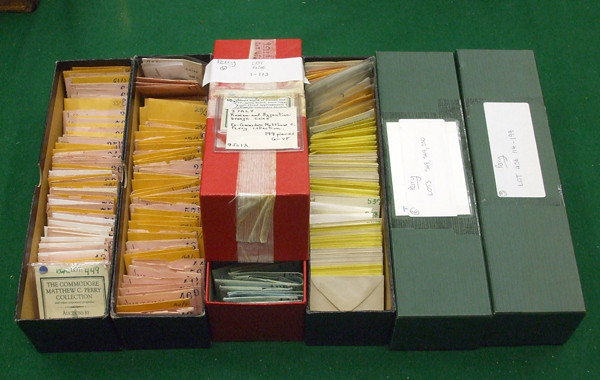 To read the complete account of the Perry Collection see: Wayne Homren, Editor The Numismatic Bibliomania Society is a non-profit organization promoting numismatic literature. See our web site at coinbooks.org. To submit items for publication in The E-Sylum, write to the Editor at this address: whomren@gmail.com To subscribe go to: https://my.binhost.com/lists/listinfo/esylum All Rights Reserved. NBS Home Page Contact the NBS webmaster 
|
